Abstract
A program is described for simultaneously aligning two or more molecular sequences which is based on first finding common segments above a specified length and then piecing these together to maximize an alignment scoring function. Optimal as well as near-optimal alignments are found, and there is also provided a means for randomizing the given sequences for testing the statistical significance of an alignment. Alignments may be made in the original alphabets of the sequences or in user-specified alternate ones to take advantage of chemical similarities (such as hydrophobic-hydrophilic).
Full text
PDF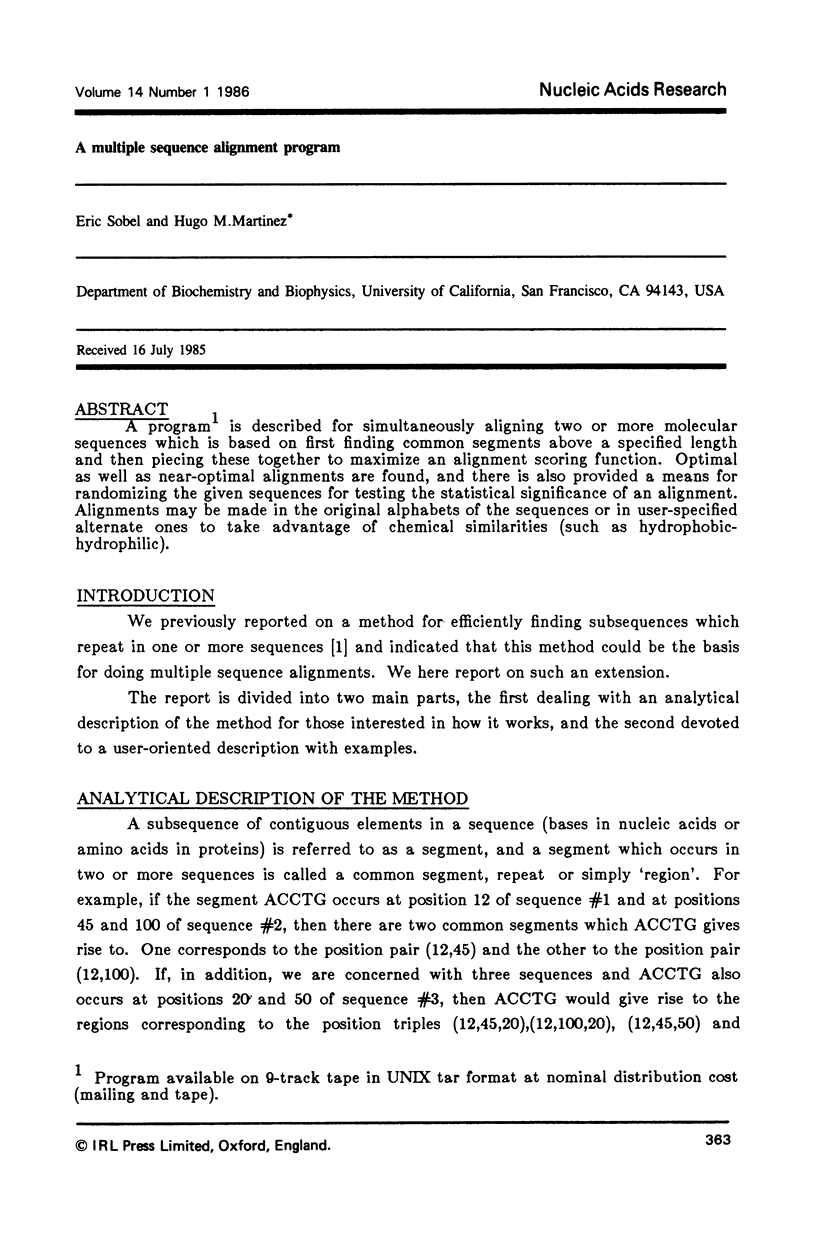
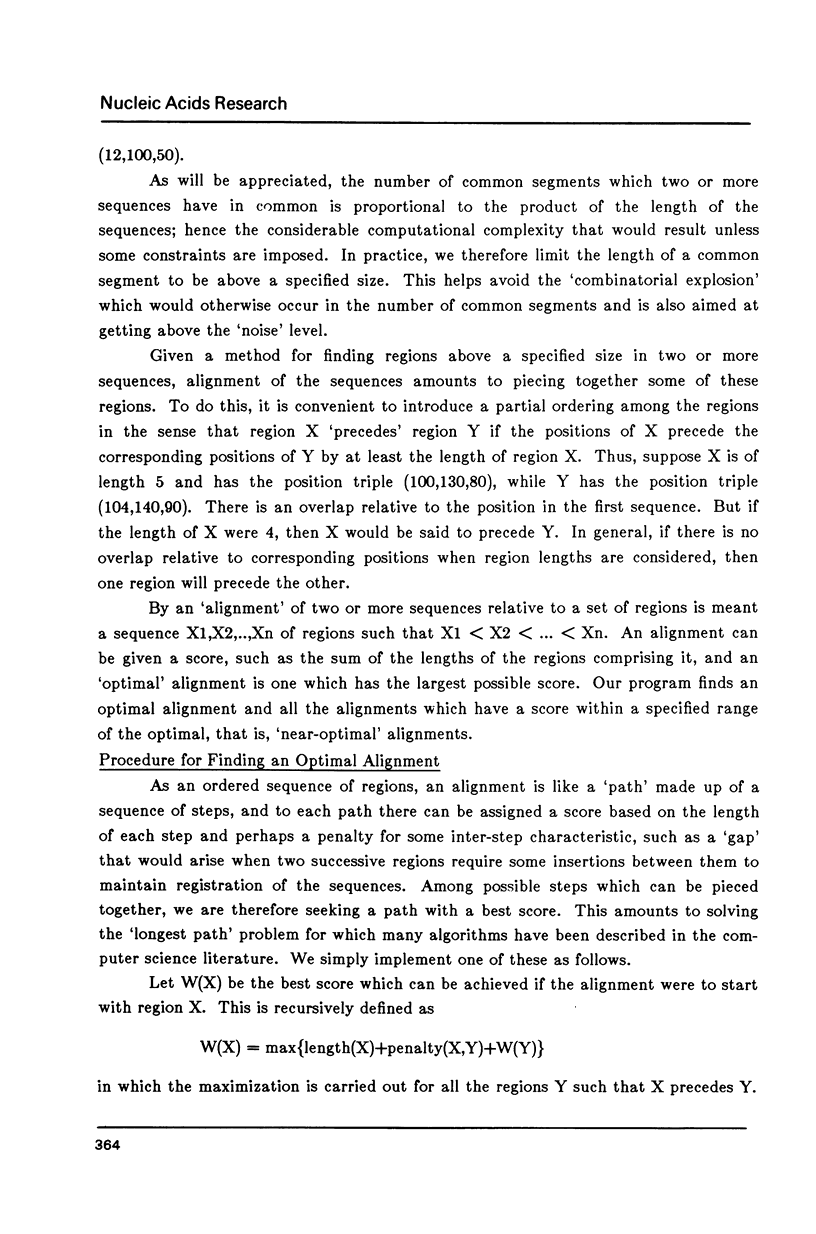
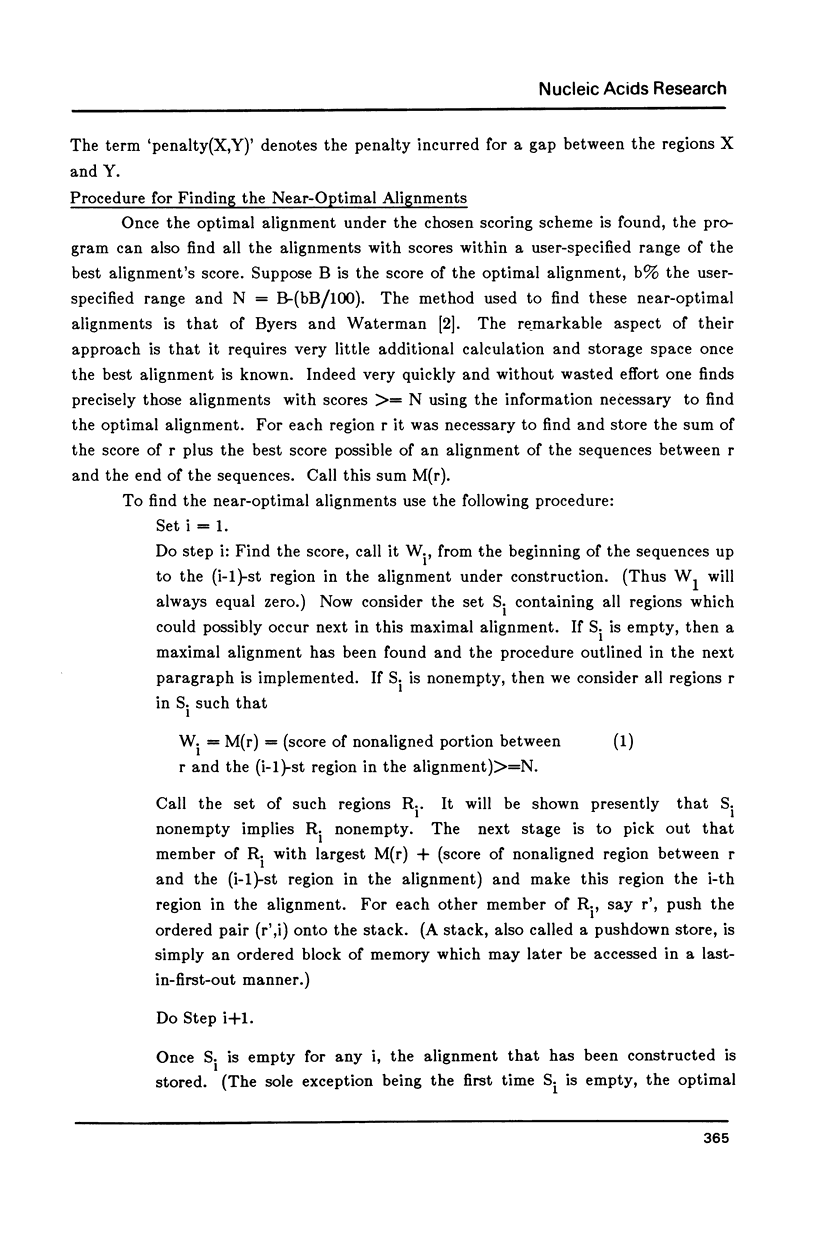


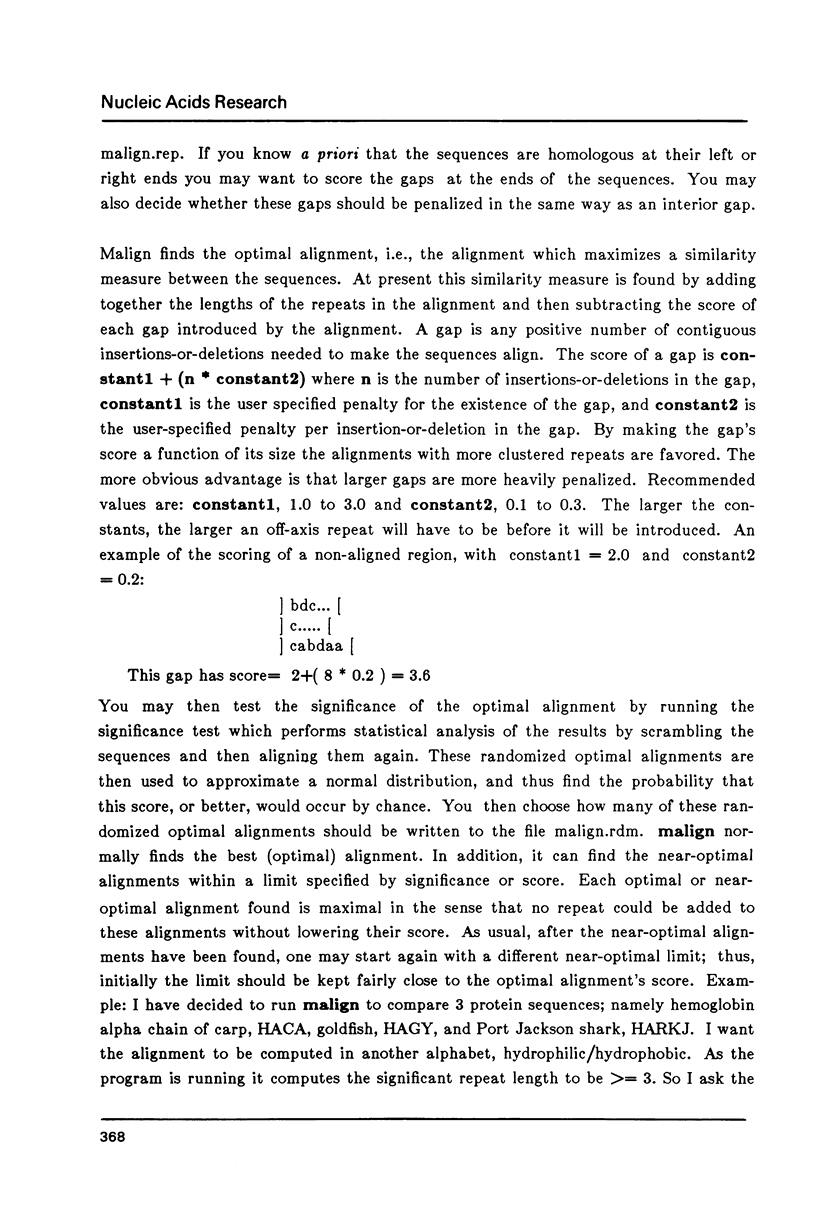
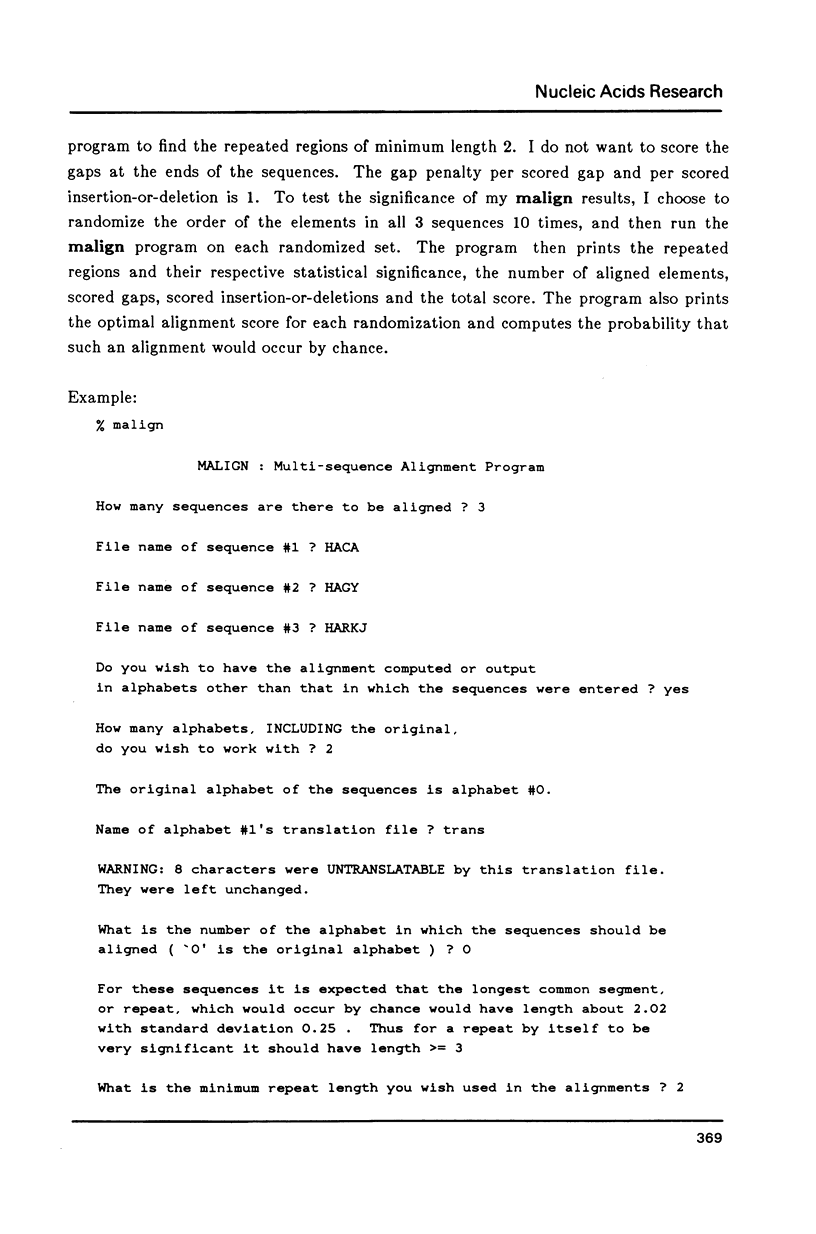

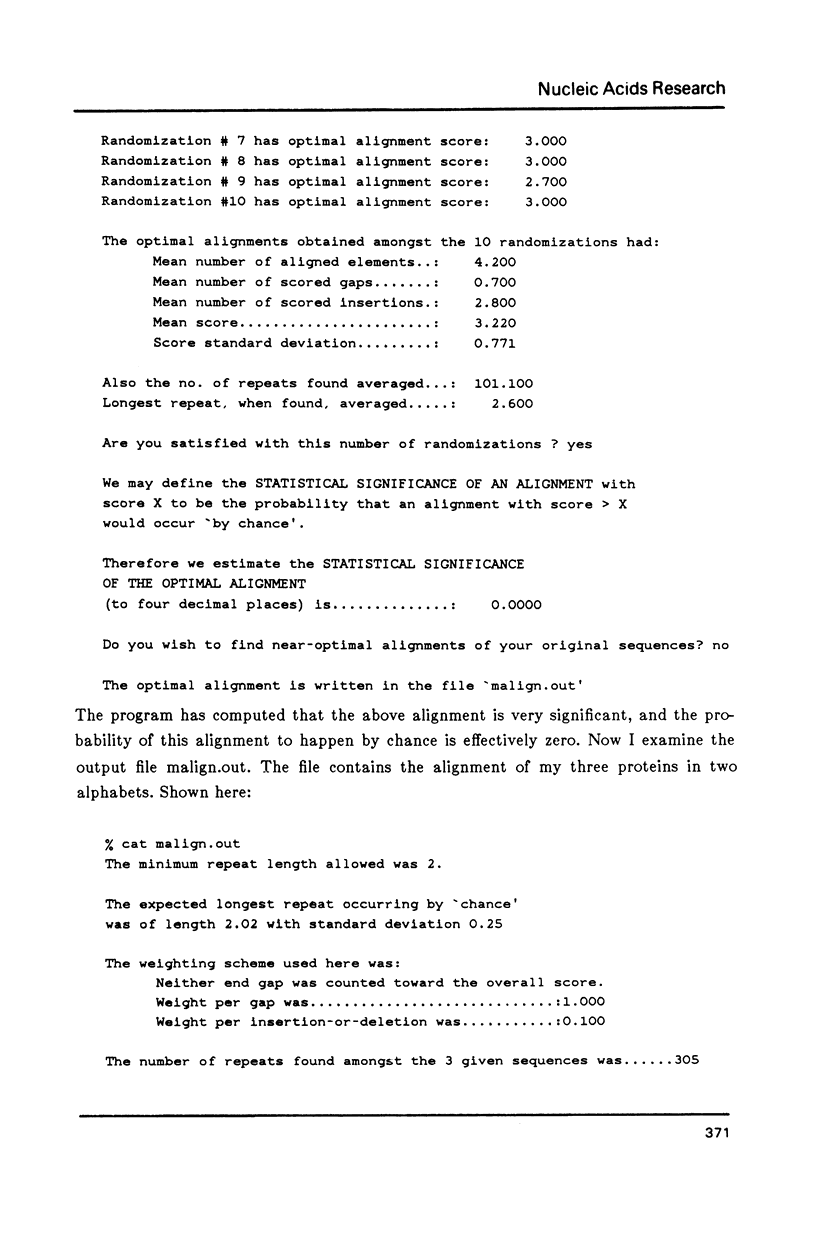
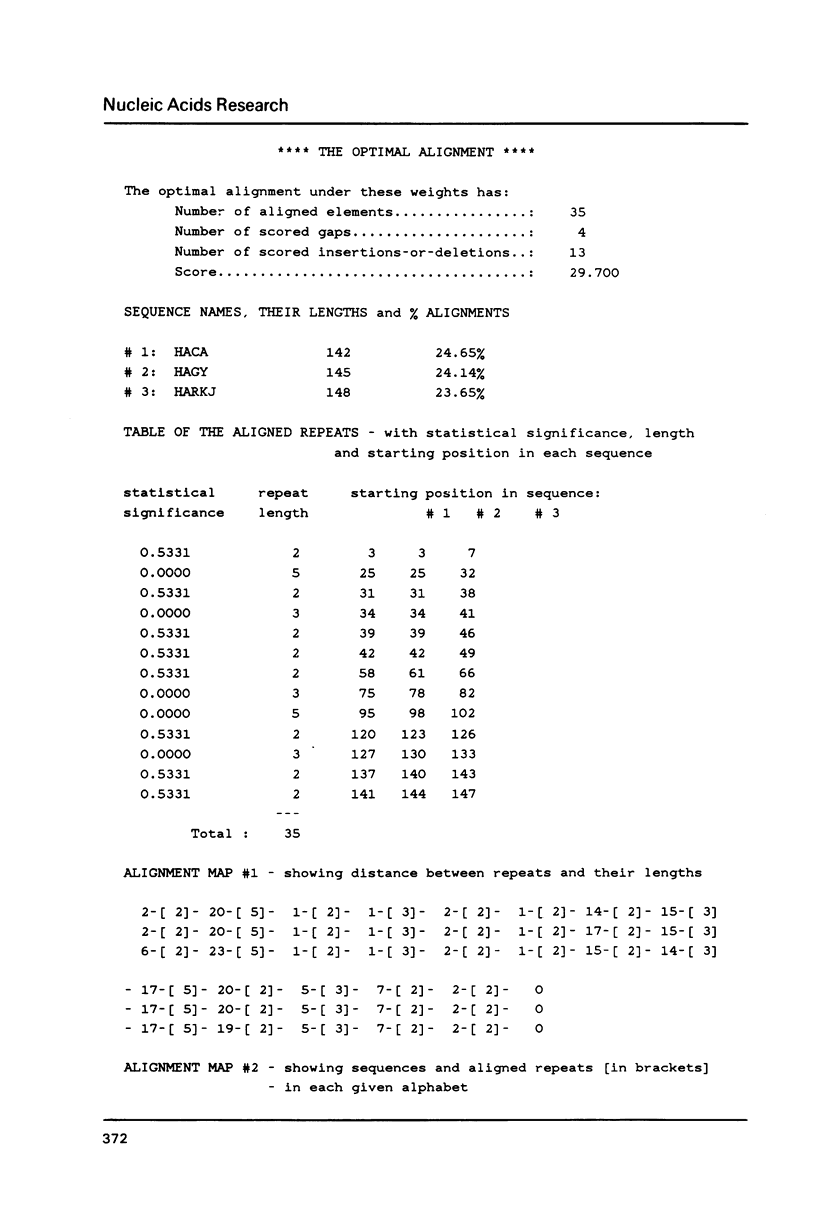

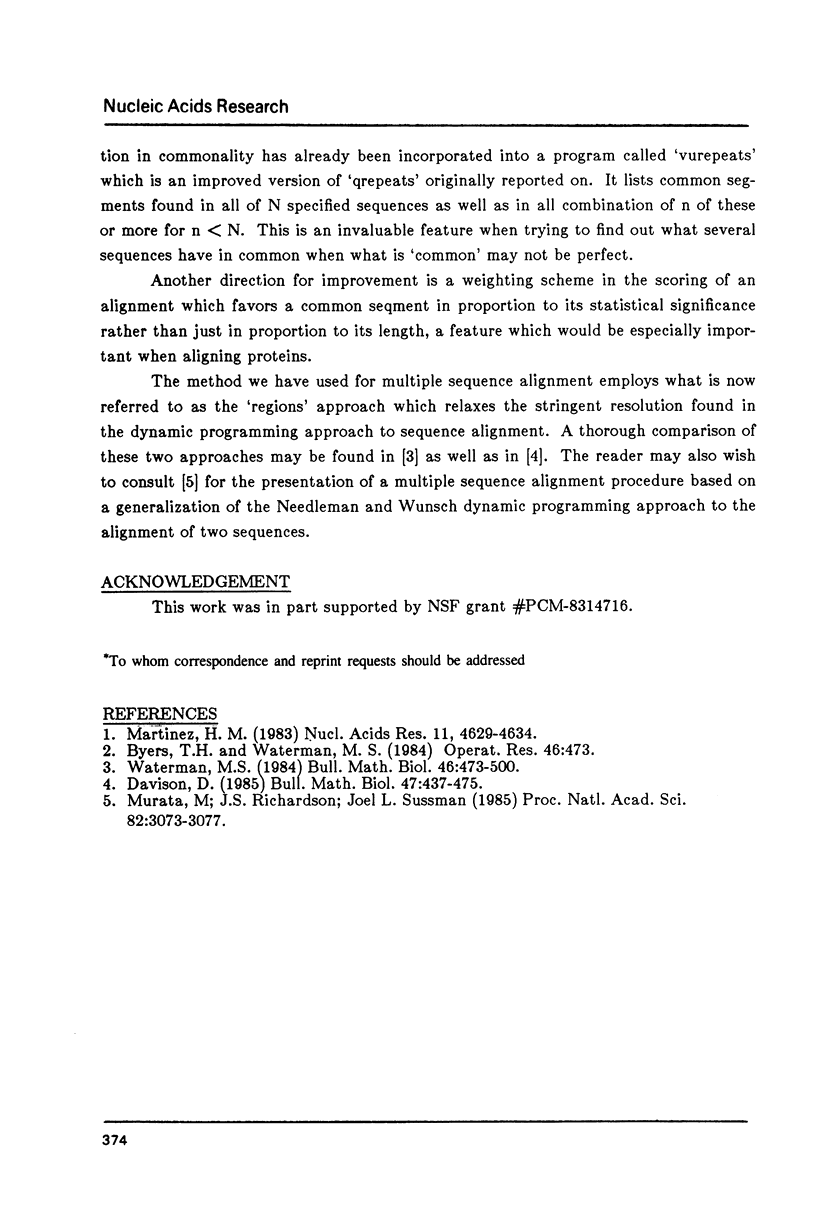
Selected References
These references are in PubMed. This may not be the complete list of references from this article.
- Davison D. Sequence similarity ('homology') searching for molecular biologists. Bull Math Biol. 1985;47(4):437–474. doi: 10.1007/BF02460006. [DOI] [PubMed] [Google Scholar]
- Martinez H. M. An efficient method for finding repeats in molecular sequences. Nucleic Acids Res. 1983 Jul 11;11(13):4629–4634. doi: 10.1093/nar/11.13.4629. [DOI] [PMC free article] [PubMed] [Google Scholar]
- Murata M., Richardson J. S., Sussman J. L. Simultaneous comparison of three protein sequences. Proc Natl Acad Sci U S A. 1985 May;82(10):3073–3077. doi: 10.1073/pnas.82.10.3073. [DOI] [PMC free article] [PubMed] [Google Scholar]


